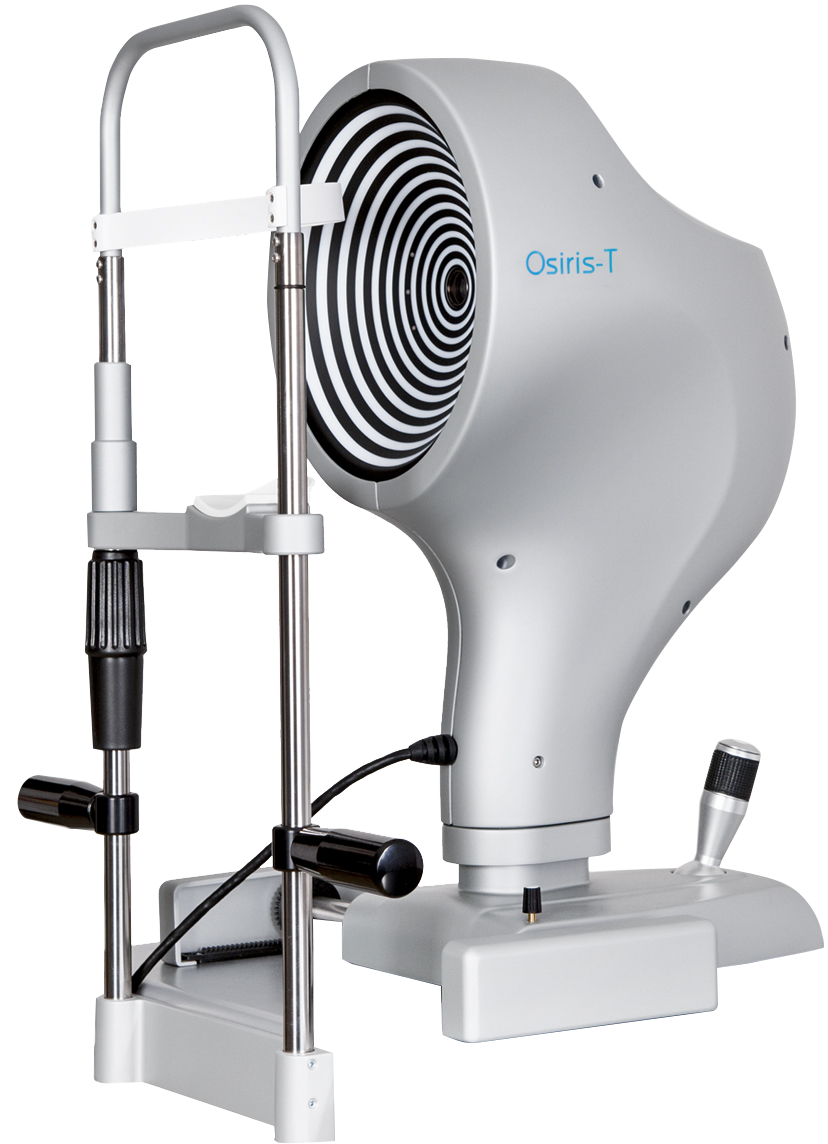

Osiris ABERROMETER | TOPOGRAPHER
Osiris-T is a corneal topographer combined with a total ocular aberrometer, it is indispensable system for both aberrometry and topography, it is capable to exam complex ocular aberrations, either corneal or internal. ABERROMETER: Osiris-T has a unique pyramidal sensor design that allows the aberrometer to measure aberrations with a resolution of 45,000 points (at the maximum pupil diameter), with a wide dynamic range. It is also able to measure the ocular wavefront in real time with a frame rate of up to 33 images per second: this makes it possible to measure and view changes in power and aberrations while the patient is accommodating. The CSO Phoenix software offers a wide range of analysis options, such as refractive error maps and visual simulations (PSF, MTF and convolution with optotype), which helps the clinician to understand and explain the patient’s visual problems. TOPOGRAPH: Using a reflection topography system based on a 22 ring Placido disk, Osiris-T is able to measure the morphology and the corneal refractive component by means of the sagittal curvature, tangential curvature, elevation and power maps. The availability of consolidated synthesis parameters makes the follow-up and diagnosis of keratoconus simple and intuitive. The integration of topography and aberrometery enables the calculation of the internal component of the wavefront.

Real Time High Resolution of 45,000 points Aberration Measurement
Measuring ocular wavefront in real time
TORIC LENS ASSISTANT
For the evaluation of the performances of a toric system the combination of corneal topography imported from CSO topographers and ocular aberration makes it possible to distinguish whether any astigmatic residue is due to a rotation of the lens or to an incorrect calculation.

PUPILLOGRAPHY

Completely integrated with the topography of the anterior surface of the cornea, it performs the pupil measurement in scotopic (0.04 lux), mesopic (4 lux), photopic (50 lux) conditions and in dynamic mode. Knowing the centre and the diameter of the pupil, is essential for many clinical procedures which seek to optimize vision quality.
ANALYSIS SOFTWARE FOR ABERRATIONS
The tool integrates with the Phoenix software, offering a wide range of analysis options, such as refractive error maps and visual simulations (PSF, MTF and convolution with optotype), which helps the clinician to understand and explain the patient’s visual problems.

OCULAR WAVEFRONT

Phoenix software enables the analysis of the patient’s ocular wavefront, both as a deviation from the wavefront and as a refractive difference from the ideal.
TECHNICAL DATA
- Data transfer USB 3.0
- Power supply external power source 24 VDC In: 100-240Vac - 50/60Hz - 2A - Out: 24Vdc - 100W
- Power cable IEC C14 plug
- Dimensions (HxWxD 515 x 315 x 255mm
- Weight 10.4Kg
- Chin rest movement 70mm ± 1mm
- Minimum height of the chin cup from table 24cm
- Base movement (xyz) 105 x 110 x 30mm
- Working distance: 74mm
- LIGHT SOURCES
- Aberrometer Led @850nm
- Fixation Led @450-650nm
- Placido Led @635nm
- Pupillometry and auxiliary Led @780nm
- ABERROMETRY
- Points measured at maximum pupil 45000
- Spatial resolution 41μm
- Pupil size range 2-9mm
- Dioptric range sph from -25D to +15D; cyl up to 10D
- Repeatability 0.05D on test eyes
- TOPOGRAPHY
- Placido rings 22
- Measured points 5632
- Topographic covering (in 43D) 10mm
- Dioptric measurement range from 1D to 100D
- Measurement accuracy Class A according to UNI EN ISO 19980-2012
- Compatibility with standard DICOM v3 (IHE integration profile EYECARE Workflow)
- MINIMUM SYSTEM REQUIREMENT
- PC: 4GB RAM - Video Card 1 GB RAM - resolution 1024 x 768 pixels - USB 3.0 type A Operating system: Windows XP, Windows 7 and Windows 10 (32/64 bit).